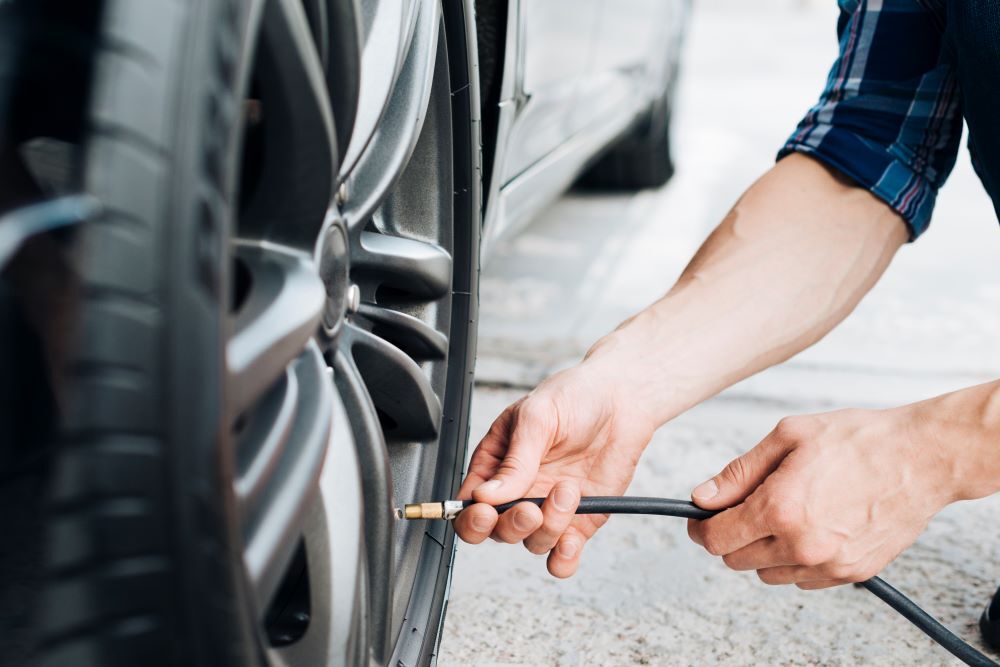







 Jane Carter -
6 hours ago -
Business -
83 views -
0 Comments -
0 Likes -
0 Reviews
Jane Carter -
6 hours ago -
Business -
83 views -
0 Comments -
0 Likes -
0 Reviews

Tyre pressure affects every part of your driving experience in the UAE. From fuel efficiency to braking distance, tyre lifespan to overall safety, maintaining proper tyre pressure is essential. Yet many drivers still believe outdated myths. These common misconceptions about tyre pressure often lead to unnecessary wear, higher fuel consumption, and dangerous road situations.
Luckily, 2025 has brought a wave of innovative tyre technologies that are finally putting these myths to rest. Smart sensors, real-time monitoring, and AI-powered prediction tools are transforming how drivers understand and maintain tyre pressure.
Here is how 2025 tyre tech is reshaping the conversation and ending confusion for good.
The UAE’s extreme heat plays a huge role in tyre pressure fluctuations. Hot roads, long highway trips, and high-speed driving cause air inside tyres to expand, often leading to overinflation or rapid pressure changes. The risks include:
Uneven wear
Reduced grip
Risk of blowouts
Poor braking performance
Higher fuel consumption
This is why the UAE has seen a strong push toward newer technologies that give drivers better control and understanding of tyre pressure.
This is one of the most common misconceptions about tyre pressure, and technology is now proving why it’s incorrect.
Pressure changes daily due to heat, driving conditions, and tyre age. A tyre can lose up to 1–2 PSI per month even without leaks. In the UAE heat, the change happens faster.
2025 Tyre Pressure Monitoring Systems (TPMS) track pressure in real time. Sensors inside each tyre instantly alert drivers if pressure drops or rises unexpectedly. You no longer need to remember monthly checks because your car does it for you.
Drivers often assume pumping extra air improves mileage. While slightly higher pressures can reduce rolling resistance, too much air makes tyres stiff and unsafe.
Overinflated tyres reduce grip and increase the risk of uneven wear or sidewall damage. The fuel savings are minimal compared to the safety risks.
2025 smart sensors automatically calculate the optimal pressure based on load, temperature, and speed. Some systems even adjust pressure automatically by releasing or compressing air inside the tyre.
Many drivers judge tyre health by appearance. A tyre can look normal even if severely underinflated.
A drop of 5 PSI may not be visible but still affects braking and stability. Underinflated tyres also heat up faster, increasing the risk of blowouts.
AI-powered tyre apps now allow drivers to see pressure levels on their phones. Alerts notify you instantly when pressure is outside the safe range. No more guesswork or visual assumptions.
Some drivers believe air is the only thing they need to maintain pressure. In reality, factors such as load weight, driving style, and heat all influence pressure.
Even a properly inflated tyre can lose pressure faster if overloaded or driven aggressively in hot conditions.
Smart load sensors installed in 2025 vehicles work with TPMS to recommend ideal pressure based on how many passengers or how much cargo you're carrying. This ensures precision rather than general inflation.
Reducing pressure for better grip is a myth that causes unnecessary damage.
Lower pressure increases friction and heat, which can weaken tyre structure. It also reduces fuel efficiency.
Modern tyre compounds and sensors maintain grip without needing pressure adjustments. The combination of heat-resistant rubber and smart monitoring keeps performance stable.
Smart technology is reducing tyre-related accidents, improving fuel efficiency, and increasing tyre lifespan. Drivers are becoming more aware because:
Cars give instant alerts
Apps provide driving and pressure insights
Smart valves prevent incorrect inflation
Workshops use digital tools for exact calibration
With all this data, misconceptions are fading, replaced by real knowledge and proactive safety habits.
By late 2025, some vehicles are introducing predictive pressure systems that use AI to analyze:
Weather conditions
Driving habits
Road temperatures
Tyre age and wear
Past pressure trends
These systems warn drivers about potential issues before they occur. For example, if the system predicts a 10 PSI drop due to a slow leak, it alerts you days in advance.
Technology is finally solving the common misconceptions about tyre pressure that have confused drivers for decades. With smart sensors, real-time monitoring, and AI-driven predictions, tyre maintenance is no longer guesswork. For UAE drivers navigating hot weather and long roads, this technology brings safer, smoother, and more efficient driving every day.
As more vehicles adopt advanced tyre tech, maintaining correct pressure becomes effortless, helping drivers stay safe and confident without relying on outdated myths.

This website uses cookies to ensure you get the best experience on our website.
To learn more about our privacy policy Click here